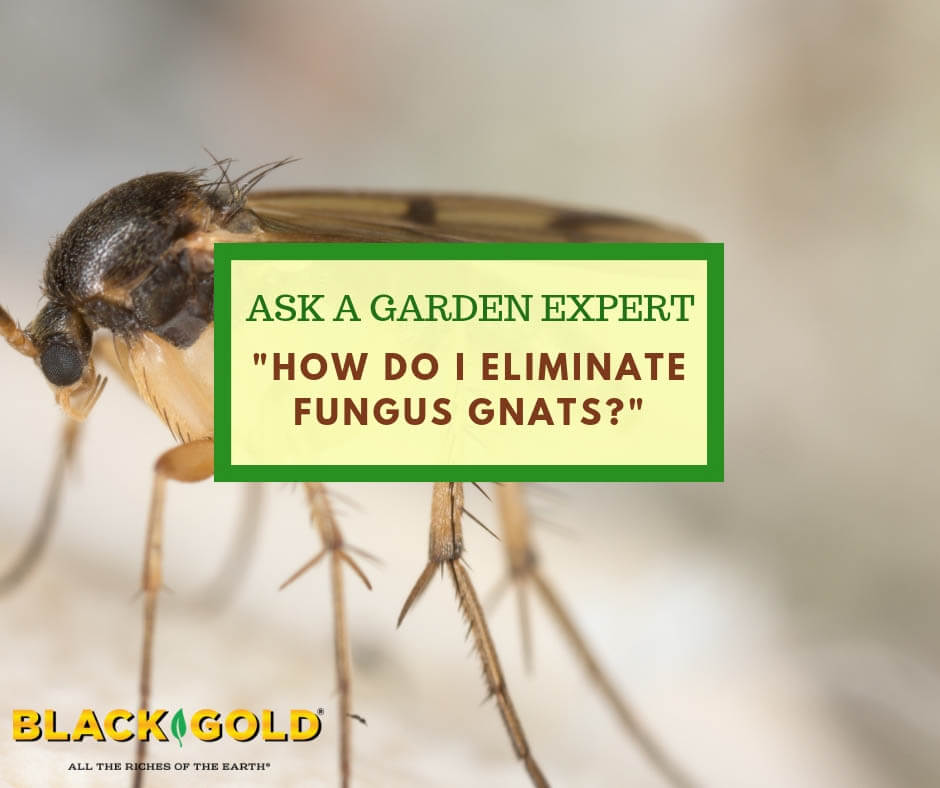“I would very much appreciate an answer to my question… specifically… which of your Black Gold soil products contain perlite/vermiculite as I have learned this is best [for fungus gnat problems]. I am also aware that organic soil may perpetuate the fungus gnat problem as well. Since I have been having a terrible problem with fungus gnats as a result of having many plants, I need soil which would not promote these flies. I have eliminated all with the use of sand but must soon do replanting and am apprehensive about purchasing the wrong type of soil. After having read that peat moss is not the best for this problem, I would like to know which of your soils you would recommend.” Question from Barbara
Answer: Fungus gnats are so annoying with their root-eating larvae and pesky adults! They are a common problem that most indoor gardeners experience. They come in through open windows or doors, open potting soil packages, or newly potted plants.
Fungus gnat management is a cultural matter and not soil dependent. All potting soils must contain organic matter, be porous, and hold water well for effective root growth, and any soil that’s moist and high in organic matter will attract fungus gnats. But, don’t despair! Follow these simple cultural guidelines, and you can easily stop fungus gnats from breeding on the surface of your potting soils.
Fungus Gnat Deterrents
First, you need to know what deters fungus gnats:
- Dry soils;
- Fast-draining soils with inorganic additives, like perlite, vermiculite, and sand;
- Inorganic soil covers, like pebbles, coarse sand, chicken grit, or diatomaceous earth (Some swear by the gnat-killing power of diatomaceous earth!);
- Pyrethrin sprays approved for organic gardening.
Fungus Gnats Management
Now that you know what fungus gnats dislike, let’s talk management. The yucky larvae feed on plant roots and soil surface algae only in the first 1 to 1.5 inches of surface soil, so this is your management target area. They also breed quickly, going from eggs to adults in as fast as 17 days, depending on the temperature (they like warmth). Follow these home integrated pest management (IPM) steps, and you should see results quickly:
 Repot badly infested plants in fresh mix. Black Gold All-Purpose Potting Mix and Cactus Mix are both good, fast draining choices;
Repot badly infested plants in fresh mix. Black Gold All-Purpose Potting Mix and Cactus Mix are both good, fast draining choices;- Spray soil surfaces with pyrethrin spray;
- Cover the soil surfaces with at least 1-inch of inorganic soil cover (I recommend diatomaceous earth.);
- Bottom water all of your plants to keep soil surfaces dry and encourage deep rooting;
- Allow plants to dry somewhat between watering;
- Use yellow sticky traps to trap adult gnats.
I hope that these tips help you manage your fungus gnat problem.
Happy gardening!
Jessie Keith


